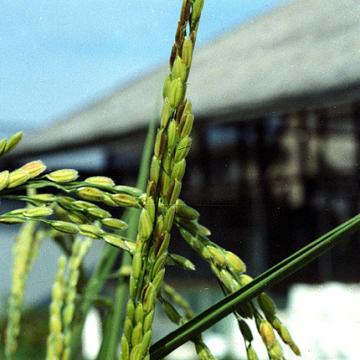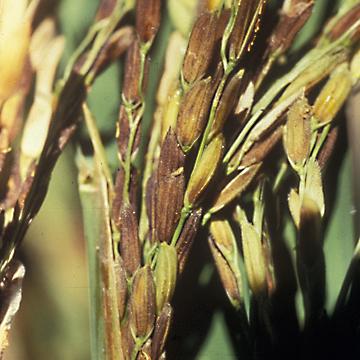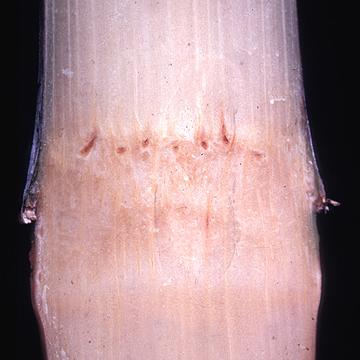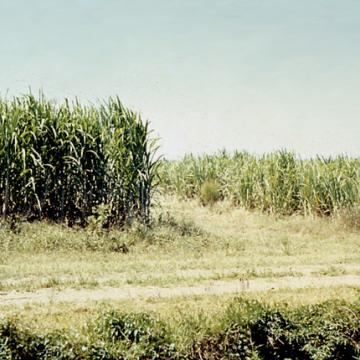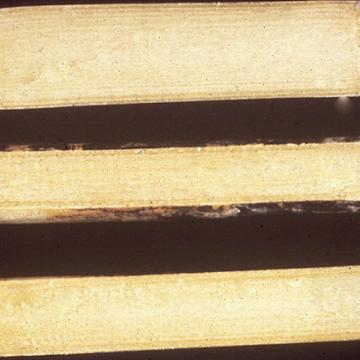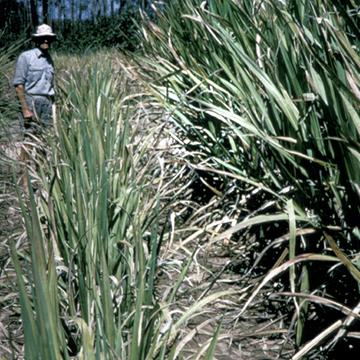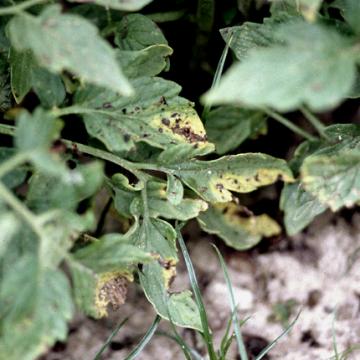DISEASE: Bacterial palea browning
HOST: Rice
Early stage of disease with browning of palea.
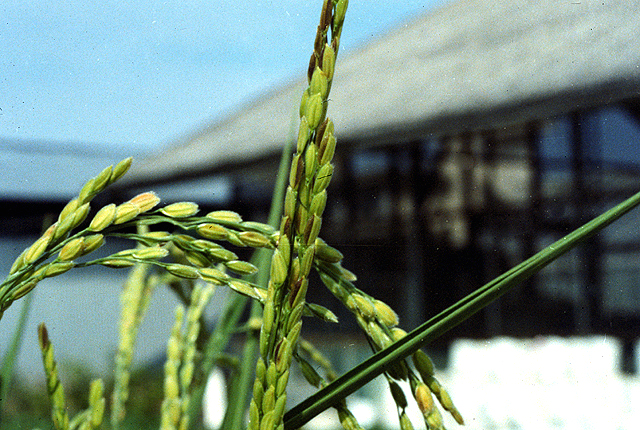
Bacterial palea browning | Rice
DISEASE: Bacterial palea browning
HOST: Rice (Oryza sativa)
PATHOGEN: Pantoea agglomerans
PATHOGEN SYNONYM: Erwinia herbicola
SOURCE: K. Ozaki, M. Goto
DISEASE: Bacterial palea browning
HOST: Rice
Browning of palea begins with water-soaked lesions that later turn dark brown. Infected grains become brown after milling.
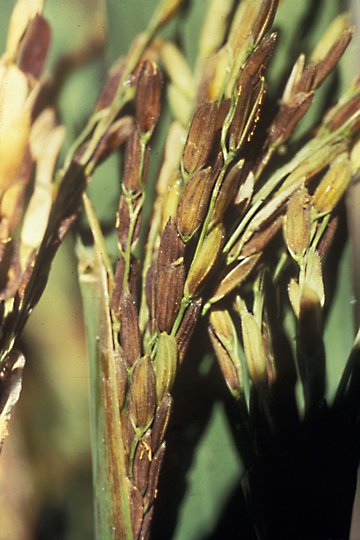
Bacterial palea browning | Rice
DISEASE: Bacterial palea browning
HOST: Rice (Oryza sativa)
PATHOGEN: Pantoea agglomerans
PATHOGEN SYNONYM: Erwinia herbicola
SOURCE: T. Mew
DISEASE: Ratoon stunt
HOST: Sugarcane
Necrotic, reddish vascular bundles in node of sliced stalk, a diagnostic symptom.
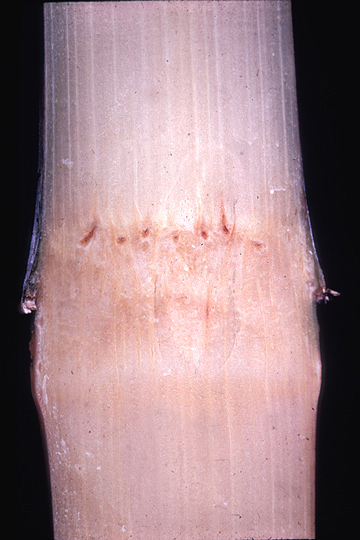
Ratoon stunt | Sugarcane
DISEASE: Ratoon stunt
HOST: Sugarcane (Saccharum officinarum)
PATHOGEN: Leifsonia xyli subsp. xyli
SOURCE: D. Teakle
DISEASE: Ratoon stunt
HOST: Sugarcane
Disease of susceptible cultivar L62-96 (right). External symptoms are characterized by stunting and poor growth.
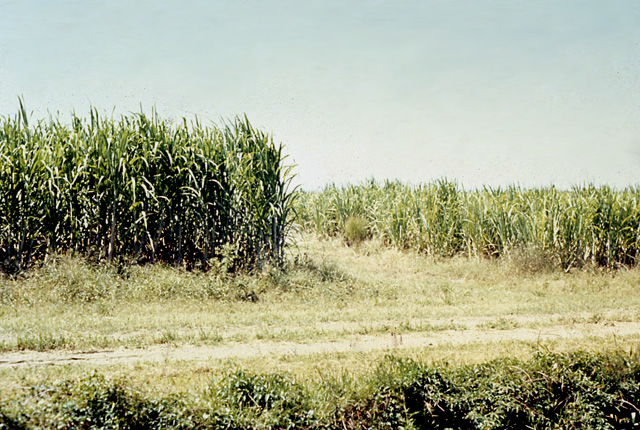
Ratoon stunt | Sugarcane
DISEASE: Ratoon stunt
HOST: Sugarcane (Saccharum officinarum)
PATHOGEN: Leifsonia xyli subsp. xyli
SOURCE: A. Gillaspie, M. Davis
DISEASE: Ratoon stunt
HOST: Sugarcane
Red discoloration just below nodal tissues is a symptom in mature stalks of 'L41-233'.
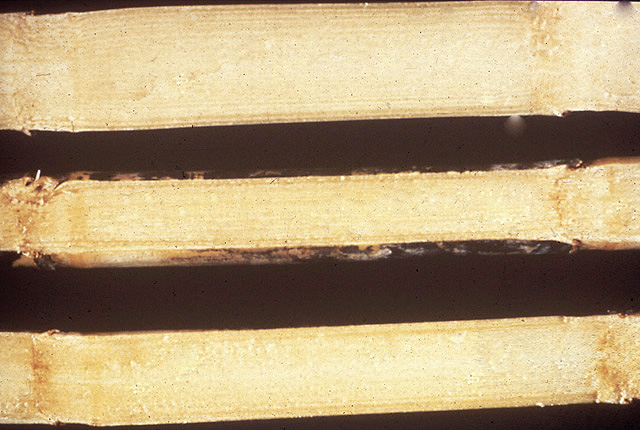
Ratoon stunt | Sugarcane
DISEASE: Ratoon stunt
HOST: Sugarcane (Saccharum officinarum)
PATHOGEN: Leifsonia xyli subsp. xyli
SOURCE: A. Gillaspie, M. Davis
DISEASE: Ratoon stunt
HOST: Sugarcane
Row of disease 'Trojan' plants (left). Healthy row (right).
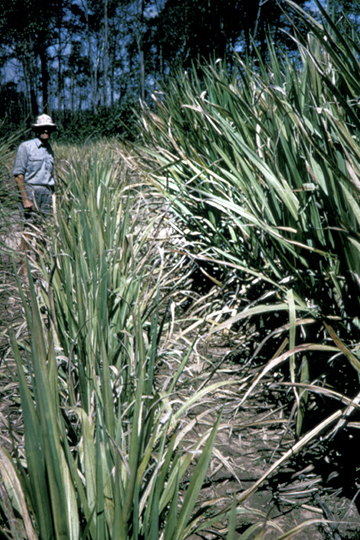
Ratoon stunt | Sugarcane
DISEASE: Ratoon stunt
HOST: Sugarcane (Saccharum officinarum 'Trojan')
PATHOGEN: Leifsonia xyli subsp. xyli
SOURCE: D. Teakle
DISEASE: Syringae leaf spot
HOST: Tomato
Leaves with brown necrotic lesions and chlorotic margins. Symptoms vary greatly among cultivars. Some have black or brown lesions with bright yellow, chlorotic areas and others do not have yellowing.
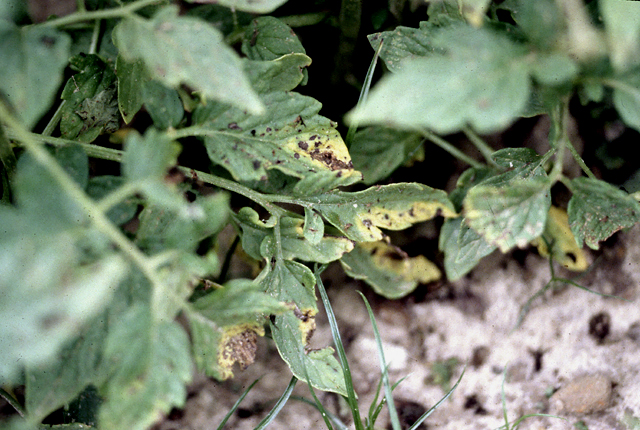
Syringae leaf spot | Tomato
DISEASE: Syringae leaf spot
HOST: Tomato (Lycopersicon esculentum)
PATHOGEN: Pseudomonas syringae pv. syringae
SOURCE: R. Gitaitis


